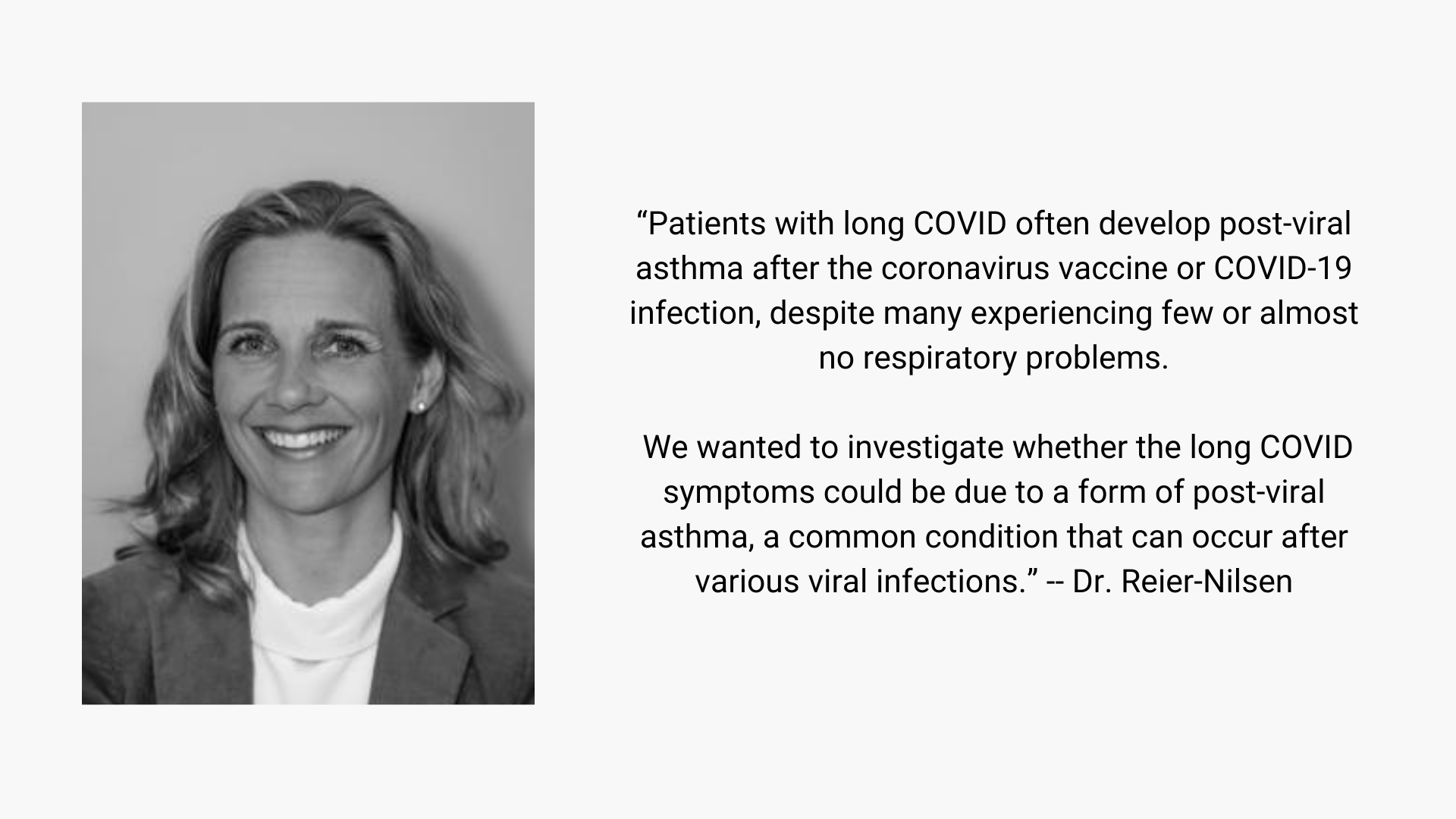Her research article “Assessment of Lung Function Variability Documents Airflow Limitation in Many Patients with Long COVID” has recently been published in Heliyon and featured in Dagens Medisin, Aftenposten, and the Swedish Dagbladet.
Long COVID is estimated to affect as many as 65 million people worldwide. Some symptoms, such as fatigue, headache, brain fog, high heart rate, and muscle pain, are also described in patients with uncontrolled asthma who, as you might say, get "too little air”.
“In my clinical practice, I have observed that patients with long COVID often develop post-viral asthma after the coronavirus vaccine or COVID-19 infection, despite many experiencing few or almost no respiratory problems. Therefore, we wanted to investigate whether the long COVID symptoms could be due to a form of post-viral asthma, a common condition that can occur after various viral infections,” said Dr. Reier-Nilsen.
Dr. Reier-Nilsen used the Ledidi Core platform to manage her study and found it very helpful. “It is an intuitive and user-friendly platform. Ledidi has facilitated national and international collaboration. Furthermore, its analysis features made it easy for us to visualise real-time data, which is usually very time-consuming,” she said.
Asthma is a chronic, inflammatory disease that causes inflammation in the small airways' walls, resulting in airway narrowing and reduced airflow. Typically, asthma is documented using a provocation test at the doctor's office to detect reduced airflow.
The challenge with such a test is that it only represents a snapshot in time, and therefore has a low ability to detect disease. Ideally, the test should be repeated several times. Several studies also indicate that the most common provocation tests may be better at detecting allergy-triggered asthma compared to infection-triggered or activity-triggered asthma. Therefore, repeated measurements were taken at home by the patients themselves to assess whether airflow was reduced in those who had a negative provocation test at the doctor's office.
Dr. Reier-Nilsen examined 30 patients who had long COVID for at least six months, all of whom were on partial or full sick leave. The patients were referred to physical rehabilitation, which included easy physical exercises on the mat three times a week. The results showed reduced airflow in eight participants with a provocation test at the doctor’s office, while 22 patients with a normal provocation test had their airflow repeatedly tested at home over a two-week period during easy physical rehabilitation. It was found that 21 of these 22 patients had reduced airflow as reported by forced expiratory volume in one second (FEV1) and not peak expiratory flow (PEF), and it gradually worsened over the two-week period. This may explain why patients with long COVID experience worsening symptoms with physical activity. The shortness of breath only became prominent as the participants became more physically active.
As a result of the findings, 29 out of 30 participants met the criteria for asthma and received asthma medication. After three weeks of treatment, all 29 had normalised lung function, were less fatigued, and no longer experienced heavy breathing.
We asked Dr. Reier-Nilsen about the newfound value and benefits of the study from a researcher's point of view and for the patients. The study shows that although long COVID patients do not have classic asthma with wheezing, they may have mild airway inflammation consistent with post-viral asthma, which exacerbates their symptoms. By using asthma medication, this inflammation can be reduced, leading to fewer symptoms and improved health. Although much is still unknown about this condition, the findings give hope that there are effective ways to alleviate these symptoms.
The study also emphasises the importance of thoroughly investigating possible post-viral asthma in patients with long-term COVID. Spot checks at the doctor’s office do not seem sufficient to assess asthma as it varies in intensity and should be evaluated with repeated measurements over time.
